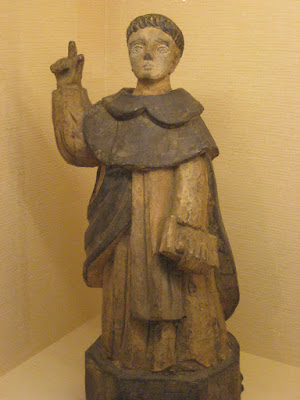This lengthy paper by Hubert Seiwart, then of the University of Hanover in Germany, published in Volume 21 of the Journal of the Royal Asiatic Society (Hong Kong Branch) back in 1981 goes some way to answering a question often asked by foreigners living in or visiting Taiwan: 'Why do traditional religions continue to be so prominent and popular in a society which is otherwise thoroughly modern?'
In the paper, which looks at the religion called I-Kuan Tao (一貫道, variously translated as 'The Unity Way' or 'The Way of the One that Penetrates Everything'), Seiwart argues that the popularity of such sects isn't in spite of modernization and Westernization but rather a reaction to it. He writes:
Adherence to traditional religious beliefs and practices can be a means of symbolizing cultural continuity and thereby identity... Modernization in China, as probably in most non-Western countries, started in the field of economy and technology. Only gradually (though inevitably) other parts of the socio-cultural system were affected... [As far as] religions which form institutions of their own, they are much less affected by social and economic changes than most other traditional institutions. A society in the process of modernization can more easily afford to cling to traditional religions than for example traditional ways of communication or education.
In terms of cultural continuity modernization in China represented a clear break, whereas in the West it was a continuation of the genuine tradition. To put it simply, one major aspect of modernization in China was and still is westernization, which means in a way that the modern culture in Taiwan is perceived as 'less Chinese' than the traditional culture. This may help to explain some of the differences in the cultural and especially the religious responses to modernization in Taiwan and in the West.
He points out that the only other social realm independent of economic changes is the arts, but while art is also a symbol of cultural continuity, 'the connoisseurs do not belong to the common people, [and] on a popular level religion holds a much more important place than the arts'.
Siewart then addresses an issue that has long fascinated me: The appearance of Jesus and Mohammed in certain Taiwanese temples.
Western civilization is not objected to in its totality, only its materialism is rejected. The menace of the modern world results from the fact that the West has submitted to materialistic thinking and this materialism gains more and more ground in China as well. Since the Chinese religious traditions and Western religions are equally opposed to this materialism, they are all fighting for the same cause, they are allies not adversaries.
The recognition of Christianity and Islam as true religions equal to the Chinese religious traditions can be observed at different intellectual levels. A rather superficial level is represented by some of the fu-luan cults. While the deities which manifest themselves by the writing stick originally all belonged to the traditional Chinese pantheon, it does happen today that Western gods, above all Jesus and Mohammed [who of course is not regarded by Muslims as a god], give revelations by fu-luan. This integration of Western deities...
When Hubert asked a spirit medium how Jesus and Mohammed could manifest themselves in a Chinese temple, he was told that 'in heaven, no boundaries between East and West exist and all gods live in the same heaven'.
The photo above shows a 19th century Taiwanese folk-religion icon of a Catholic friar, exhibited in Kaohsiung History Museum.
Subscribe to:
Post Comments (Atom)


No comments:
Post a Comment